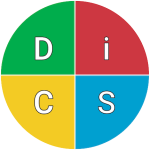Navigating Personalities in the Workplace: Building Strong Teams Across Generations
In today’s diverse workforce, understanding and effectively managing different personalities is crucial for fostering a productive and harmonious workplace environment. As a leader or team member, recognizing the unique traits and preferences of individuals becomes even more important when working with multi-generational teams.
In this article, I will explore the significance of team building, leadership, and the impact of generations on personalities in the workplace. Drawing on the insights from the DISC model, we will delve into practical strategies to bridge gaps in knowledge while celebrating our differences.
- The Power of Team Building: Team building is more than just a buzzword; it is a cornerstone of successful organizations. By fostering collaboration, trust, and open communication, teams can leverage the diverse strengths and perspectives of their members. Effective team building activities can range from regular team meetings and brainstorming sessions to off-site retreats or team-building exercises. These initiatives create opportunities for individuals to understand each other better, build rapport, and establish a sense of camaraderie.
- Leadership: Guiding the Way: Leaders play a pivotal role in shaping the dynamics and culture of a workplace. They not only set the vision and goals but also inspire and motivate their teams. When it comes to managing personalities, a great leader understands that one size does not fit all. They adapt their leadership style to meet the unique needs and preferences of each team member. By leveraging the strengths of individuals, leaders can create an environment where everyone feels valued and empowered to contribute their best.
- Generations in the Workplace: With the growing prevalence of multi-generational teams, it is crucial to recognize the impact of generations on workplace dynamics. Each generation brings its own set of values, work styles, and communication preferences. By understanding and appreciating these differences, we can bridge the gaps and leverage the collective wisdom of diverse generations. It is important to avoid stereotyping or making assumptions about individuals based on their generation. Instead, we should focus on fostering an inclusive environment that values the contributions of every team member.
- Personalities and the DISC Model: The DISC model is a powerful tool for understanding and classifying personalities based on four primary behavioural styles: Dominance, Influence, Steadiness, and Conscientiousness. Recognizing the dominant traits of each individual can help us navigate workplace interactions more effectively. For instance, individuals with a dominant style may be assertive and results-oriented, while those with an influence style tend to be outgoing and persuasive. People with a steadiness style are typically calm and cooperative, while those with a conscientiousness style are detail-oriented and analytical.
- Bridging the Generational Gaps: To bridge the gaps in knowledge and preferences among different generations, it is crucial to foster open channels of communication and mutual understanding. Here are some strategies that can help:
- Encourage cross-generational mentoring: Pairing individuals from different generations allows for knowledge transfer and creates opportunities for personal growth.
- Embrace flexibility: Recognize that different generations may have different work styles and preferences. Offering flexible work arrangements can help accommodate these differences and promote work-life balance.
- Promote a culture of learning: Encourage continuous learning and professional development opportunities for all team members, regardless of their generation. This fosters a growth mindset and ensures that everyone feels valued and supported.
- Establish clear communication channels: Implementing effective communication strategies, such as regular team meetings or collaborative platforms, ensures that information flows freely and inclusively across generations.
Navigating personalities in the workplace is a continuous journey that requires understanding, empathy, and adaptability. By recognizing the significance of team building, adapting leadership styles, appreciating generational differences, and utilizing tools like the DISC model, we can build strong and cohesive teams that thrive across generations. Embracing diversity and leveraging the unique strengths of each individual fosters a culture of innovation, collaboration, and mutual respect, ultimately leading to organizational success.

![]() Follow Melanie Needham on LinkedIn
Follow Melanie Needham on LinkedIn
Related Links:
DiSC Relationship Sales Training Course Diversity & Culture in The Workplace





